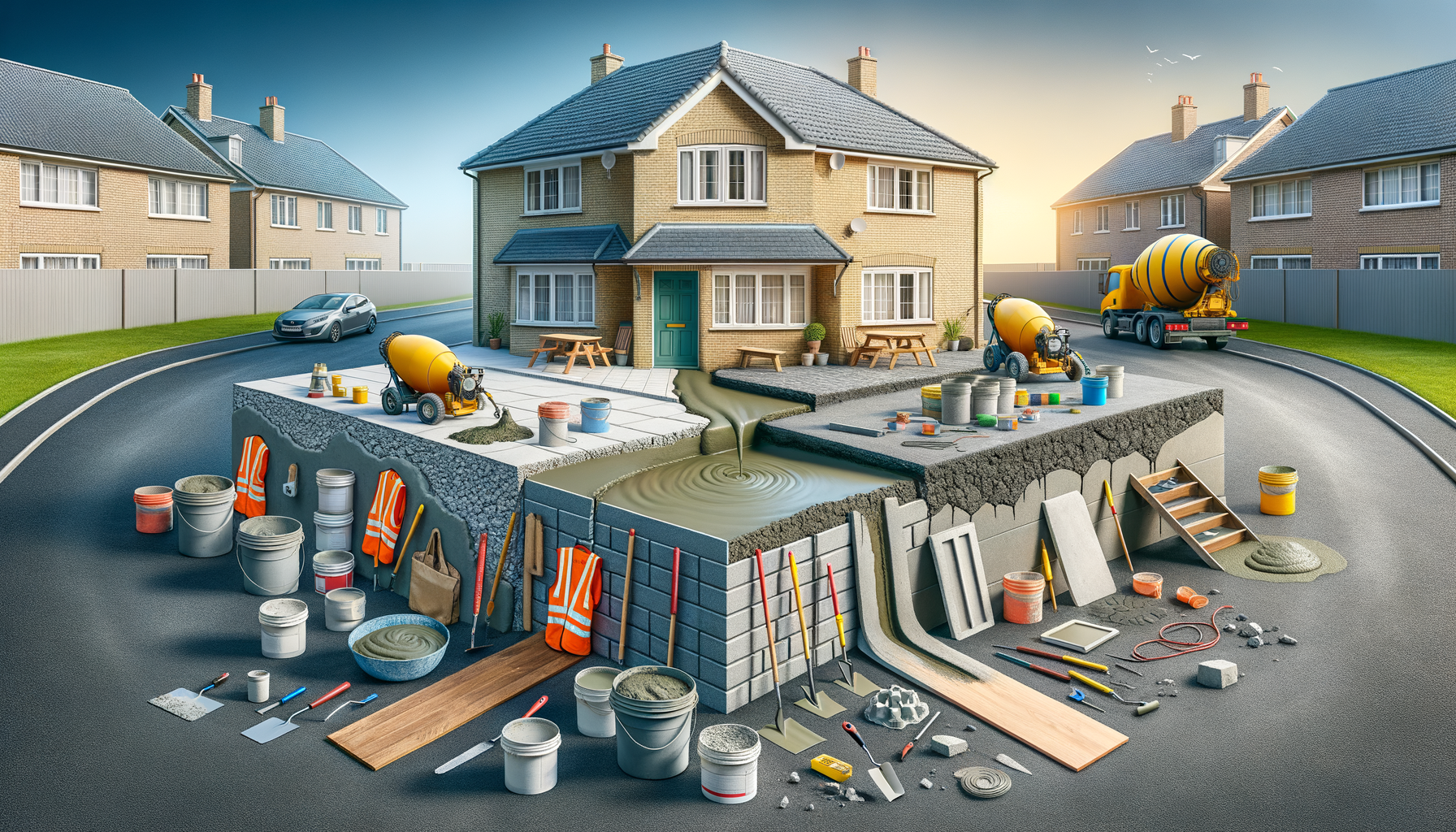Understanding Concrete Resurfacing: A Primer
Concrete resurfacing is an innovative solution that provides a new lease on life for old and worn-out concrete surfaces. Whether it’s your driveway, patio, or any other concrete area, resurfacing can transform these spaces without the need for complete replacement. This process involves applying a thin layer of a new surface over the existing concrete, which can repair cracks, cover stains, and enhance the overall appearance. By opting for resurfacing, homeowners can save significantly compared to the cost of tearing out and replacing old concrete, making it a practical choice for budget-conscious individuals.
Resurfacing is not only cost-effective but also versatile. It allows for a variety of finishes, including stamped, stained, or polished looks, giving homeowners the freedom to choose styles that match their aesthetic preferences. Additionally, the materials used in resurfacing are often more durable and resistant to weather and wear, ensuring longevity and reduced maintenance.
In summary, concrete resurfacing is a smart approach for those looking to rejuvenate their concrete surfaces without the hefty price tag of replacement. It’s a blend of practicality and aesthetic enhancement that caters to a wide array of needs.
The Process of Concrete Resurfacing
Concrete resurfacing is a meticulous process that requires careful preparation and execution. The first step involves cleaning the existing concrete surface thoroughly to remove dirt, debris, and any loose particles. This is crucial to ensure that the new surface layer adheres properly. Once the surface is clean, any existing cracks must be repaired, as they can impact the integrity of the resurfacing work.
Following the preparation, a bonding agent is applied to the surface to enhance adhesion. The resurfacing material, typically a mixture of cement, sand, and special additives, is then applied. Depending on the desired finish, this layer can be textured, colored, or patterned to achieve the homeowner’s specific vision. The application must be done quickly and evenly to prevent any inconsistencies in the surface.
After application, the surface needs time to cure. This is a critical phase as it determines the strength and durability of the resurfaced area. Curing times can vary based on weather conditions and the specific materials used, but generally, it takes about 24 to 48 hours before the surface can handle light foot traffic. Full curing can take up to a week.
Overall, the resurfacing process is an efficient way to enhance the appearance and functionality of concrete surfaces, provided it is executed with precision and care.
Comparing Concrete Resurfacing Options
When it comes to concrete resurfacing, homeowners have several options to choose from, each offering unique benefits. One popular choice is stamped concrete resurfacing, which mimics the look of high-end materials like stone or brick without the associated costs. This option is ideal for those seeking a decorative finish that adds value and aesthetic appeal to their property.
Another option is stained concrete resurfacing, which involves applying a color stain to the resurfaced area. This method is perfect for those looking to add a touch of color and personality to their concrete surfaces. Stains come in a variety of hues and can be combined to create custom designs.
For those prioritizing durability and a sleek appearance, polished concrete resurfacing is an excellent choice. This method involves grinding the surface to a smooth finish and applying a sealant for added protection. It’s a popular option for both indoor and outdoor spaces due to its modern look and low maintenance requirements.
Each resurfacing option has its own set of advantages, and the choice ultimately depends on the homeowner’s preferences, budget, and the specific needs of the space. By understanding these options, homeowners can make informed decisions that align with their goals.
Benefits of Concrete Resurfacing
Concrete resurfacing offers a multitude of benefits that make it an attractive option for homeowners. One of the primary advantages is cost savings. Resurfacing is significantly cheaper than replacing concrete, allowing homeowners to achieve a fresh look without breaking the bank. Additionally, it’s a faster process, minimizing the disruption to daily life.
Another benefit is the enhancement of curb appeal. A well-resurfaced concrete area can dramatically improve the appearance of a home, making it more inviting and aesthetically pleasing. This is particularly beneficial for those looking to sell their property, as it can increase market value and attract potential buyers.
Resurfacing also improves the durability of concrete surfaces. The materials used in resurfacing are designed to withstand harsh weather conditions and heavy foot traffic, ensuring longevity and reducing the need for frequent repairs. Moreover, resurfacing can address safety concerns by smoothing out uneven surfaces and reducing the risk of trips and falls.
In essence, concrete resurfacing is a practical and efficient way to revitalize concrete surfaces, offering both aesthetic and functional advantages that cater to a variety of needs.
Choosing the Right Contractor for Concrete Resurfacing
Selecting a qualified contractor is crucial for a successful concrete resurfacing project. A reputable contractor will have the experience and expertise to execute the project efficiently and to a high standard. When choosing a contractor, it’s important to consider their portfolio of past work, as this provides insight into their capabilities and style.
References and reviews are also valuable resources. Speaking with previous clients can offer firsthand accounts of the contractor’s professionalism and quality of work. Online reviews can also provide additional perspectives and highlight any potential red flags.
It’s advisable to obtain multiple quotes to compare pricing and services. However, the cheapest option isn’t always the best. Consider the quality of materials offered and the contractor’s reputation when making a decision. Additionally, ensure that the contractor is licensed and insured, as this provides protection in case of any accidents or issues during the project.
By taking the time to research and select the right contractor, homeowners can ensure that their concrete resurfacing project is completed to their satisfaction, resulting in a beautiful and durable outcome.




Leave a Reply